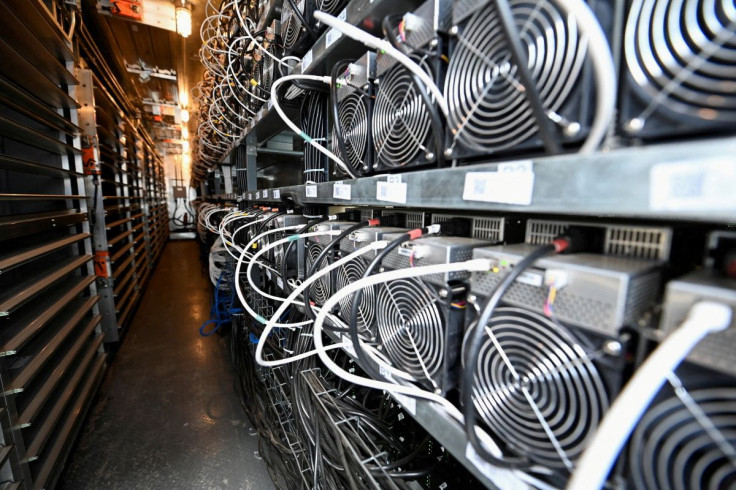Monetizing Networks: How US Consumers Are Earning Cryptocurrency By Expanding Wireless Networks
The past two years have illustrated our reliance on networks and connectivity, as the pandemic mandated people across the world to stay at home. Yet, COVID-19 simultaneously exposed the deep-seated issue of the digital divide, as huge swaths of the population have struggled to work or study without access to reliable or affordable connectivity.
Statistics show that in 2021, 27.6 million US households do not have home internet access – and still many more households and communities, while having access, can experience only limited performance that does not allow them to benefit from the many applications that so many of us take for granted today. Underscoring the criticality of ubiquitous connectivity, Joe Biden’s administration committed another $65 billion to help close this gap by offering funding programs to service providers, state and local governments, and many communities. As a result, an alternative model to delivering wireless coverage has emerged: do it yourself (DIY) private networks, which can earn the participants cryptocurrency if they help in the build-out of these networks. In general, participation is open to the public. So, how does this work?
The development of decentralized networks
In 2020, the US Federal Communication Commission’s authorized the use of Citizens Broadband Radio Service (CBRS) spectrum bands that can be used for building out new private wireless networks capable of serving all kinds of use cases. This new spectrum option has introduced a new financial and technical model that offers favourable economics and simplicity, which in turn, spurred the development of new decentralized network approaches.
Decentralized networks are being built using a collection of standard cellular wireless equipment, such as access points (small cells) and network gateways. The public can purchase this network equipment online, enabling them to deliver wireless connectivity across their home, business, or community, and connect a broad range of devices (such as smartphones, tablets, computers, Mi-Fi, smart speakers, etc.). This model means that the public can expand cellular coverage organically, without the need for traditional wireless carriers to be relied on to extend or modernize their broadband into underserved areas.
Importantly, an incentive for people to buy and install this network equipment is that they are rewarded in cryptocurrency when somebody connects to the network through their wireless access points. The more mobile devices that are able to join and connect via an individual’s network equipment, the more cryptocurrency this individual can earn. These are real network models with real deployments today. Examples include FreedomFi and Pollen Mobile . While this may sound complicated, advances in wireless spectrum and today’s networking products, it’s actually quite simple. Let’s take a closer look at how these networks work.
FreedomFi can deliver private LTE and 5G wireless services, along with a standard wireless connectivity called LoRA , which is specifically designed for connecting the growing number of Internet of Things (IoT) devices, such as smart meters, parking sensors and digital signage. Consumers or business can purchase a FreedomFi Gateway and a compatible small cell, and then start managing their own wireless network.
FreedomFi has partnered with a start-up called Helium that rewards consumers or businesses who provide connectivity, in a cryptocurrency called Helium Network Tokens (HNTs). FreedomFi has been designed to help offload traffic from existing cellular carriers, such as DISH Wireless and GigSky. So, if a subscriber from DISH connects to the FreedomFi network, the owner of the wireless radio providing this connection, earns crypto in HNTs.
Pollen Mobile, which recently launched its network service in the Bay Area, works in a very similar way. However, Pollen Mobile is completely owned and operated by its user community. It is built with security at the heart of its offering, so that nobody is tracking or selling the user’s data (as it is not centrally owned). Connecting to Pollen Mobile is like connecting to a traditional carrier; for a user to connect to it they must purchase a Pollen SIM and roam onto the network.
Ultimately, both FreedomFi and Pollen Mobile are helping to expand reliable and secure wireless connectivity and are using cryptocurrencies to incentivise individuals to participate in extending coverage. As the interest and demand for purchasing these types of connectivity products is rapidly accelerating; more people want to have more control of such a critical service: a new DIY network built by the community for the community.
A positive step forwards for cryptocurrency development
So, how is this model for generating cryptocurrency different from traditional mining? Most conventional cryptocurrencies, like Bitcoin, are produced through "proof of work." This requires computing devices to solve incredibly complex problems which are computationally costly but easy to verify through the decentralised blockchain. This means that the currency can be trusted, but consumes a significant amount of energy.
Generating cryptocurrency via distributed networks restricts the amount of currency that can be generated, preserving its value, while also encouraging an approach that increases values for customers and network users by creating an incentive to expand network coverage. These networks also offer a dramatic reduction in energy use versus conventional cryptocurrency generation.
Connectivity for the first time is becoming democratised – the opportunity for consumers and businesses to be involved in the development of networks that can help close the digital divide is an exciting one. As digital currency becomes accepted into the wider mainstream, the prospect of earning it by extending network connectivity is appealing, and is understandably already in high demand.
(Minchul Ho is the general manager, North America, of Baicells)

© Copyright IBTimes 2024. All rights reserved.


















